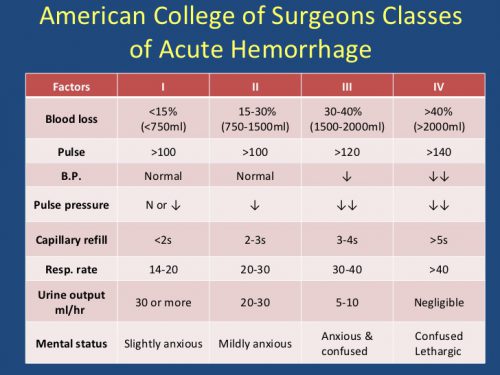The activation of the massive transfusion protocol (MTP) for hypotension is commonplace. The MTP provides rapid access to large volumes of blood products with a simple order. Trauma centers each design their own protocol, which usually includes four to six units of PRBC per MTP “pack.”
This rapid delivery system, coupled with rapid infusion systems, allows the delivery of large volumes of blood and other blood products very quickly. But could it be that this system is too slick, and we are a bit too zealous, and could even possibly transfuse too much blood?
The trauma group at Cedars-Sinai in Los Angeles retrospectively reviewed their own experience via registry data with their MTP over a 2.5 year period for evidence of overtransfusion. All patients who received blood via the MTP were included. Patients who had a continuous MTP > 24 hours long, those who died within 24 hours, and those who had a missing post-resuscitation hemoglobin (Hgb) were excluded.
The authors arbitrarily defined overtransfusion as a Hgb > 11 at 24 hours. They also compared the Hgb at the end of the MTP and upon discharge with this threshold. They chose this Hgb value because it allows for some clinical uncertainty in interpreting the various endpoints to resuscitation.
Here are the factoids:
- 240 patients underwent MTP during the study period, but 100 were excluded using the criteria above, leaving 140 study patients
- Average injury severity was high (24) and 38% suffered penetrating injury
- Median admission Hgb was 12.6
- At the conclusion of the MTP, 71% were overtransfused using the study definition, 44% met criteria 24 hours after admission, and 30% did at time of discharge
- Overtransfused patients were more likely to have a penetrating mechanism, lower initial base excess, and lower ISS (median 19)
The authors concluded that overtransfusion is more common than we think. This may lead to overutilization of blood products, which has become much more problematic during the COVID epidemic. They recommend that trauma centers track this metric and consider it as a quality of care measurement.
Bottom line: This is a nicely crafted and well-written study. It asks a simple question and answers it with a clear design and analysis. The authors critique their own work, offering a comprehensive list of limitations and a solid rationale for their assumptions and conclusions. They also offer a good explanation for their choice of Hgb threshold in defining overtransfusion.
I agree that overtranfusion truly does occur, and I have seen it many times first-hand. The most common reason is the lack of well-defined and reliable resuscitation endpoints. How do we know when to stop? What should we use? Blood pressure? Base excess? TEG or ROTEM values? There are many other possibilities, but none seem reliable enough to use in every patient.
Patients with penetrating injury proceeding quickly to OR more commonly experience overtransfusion. This may be due to the reflexive administration of everything in each cooler and the sheer speed with which our rapid infuser technology can deliver products. The more product in the cooler, the more that is given, which may lead to the overtranfused condition.
The authors suggest reviewing the makeup of the individual MTP packs, and this makes sense. Are there too many in it? This could be a contributing factor to overtransfusion. It might be an interesting exercise to do a quick registry review at your own center to obtain a count of the number of MTP patients with a final Hgb > 11. If you find that your numbers are high, consider reducing the number of red cell packs in the cooler to just four. But if you already only include four, don’t reduce it any further. And in any case, critically review the clinical indicators your surgeons use to decide to end the MTP to see if, as a group, they can settle on one to use consistently.
Reference: Overtransfusion of packed red blood cells during massive transfusion activation: a potential quality metric for trauma resuscitation. Trauma Surg Acute Care Open 7:e000896., July 26 2022.




